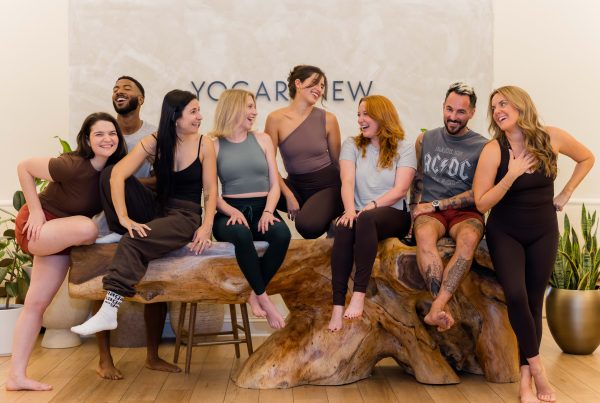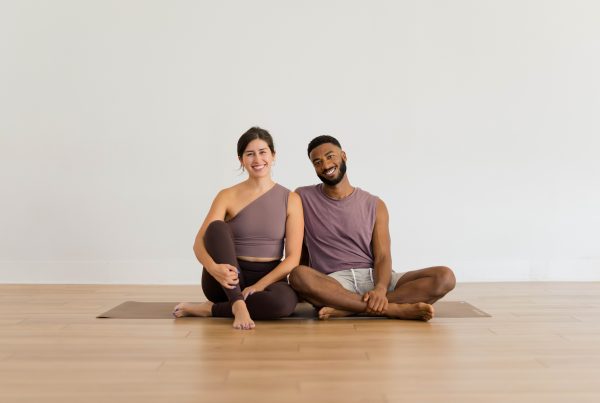
As we approach the new year, it feels like an important time to be reflecting on this past year. Reflections on the previous year usually include the highlights, the struggles and the difficult things we’ve had to overcome. Reflecting around the holidays is a great way to stay grounded and set yourself up for a flourishing year ahead.
What do reflections look like in the yoga world?
Being an ancient practice, yoga has brought us the simple gift of being with your body and breath and the ability to still the fluctuations of the mind. This practice has taught us the importance of presence and in doing so, we can learn to appreciate the residual effects we notice in our own personal practice. By implementing the practices and sentiments put forth in the Yoga Sutras, compiled by ancient sages, we can learn the subtle art of noticing, and in turn, reflecting.
Create a practice that feels reflective
Whether you’re seated on your mat and tending to a breathing practice or you prefer the physical practice of yoga asana, carve out time to commit to a practice that will help you start to tune out and look inward. For many of us, that means moving our bodies, and for the other lot of us, it means just sitting and breathing to notice the breath. We’ll outline some practices below for you to start to tune inward to focus on your reflections:
Nadi Shodhana Breathing Practice
Alternate nostril breathing is one of the many breathwork techniques studied and practiced in Ayurveda (yoga’s sister science) and yoga. The practice is relatively simple and is meant to relax you.
Here’s how:
-
- Start seated in a comfortable seated posture like Sukhasana (easy seat) with your sit bones higher than your knees. Typically with this practice, we start on the left side (left nostril first).
- Use your right hand ring finger to close your left nostril, and your right thumb to block your right nostril.
- The index and middle finger can rest on your third eye or close in towards your palm.
- Close your right nostril, inhale through your left nostril for five counts.
- Close the left nostril with ring finger, and exhale through your right nostril for five counts.
- Alternate between the two sides open and closing, and add pauses where you feel comfortable. *You can practice retaining the breath for five counts, and gradually increase.
Sukhasana Meditation Practice
Sukhasana, or easy seat, is a posture that allows you to find stillness. Adding in a guided or silent meditation can seem challenging, but will help with your practice of balancing and quieting the mind to reflect.
How to:
- Start by sitting with your left shin crossed in front of your right. You can prop yourself up on a block or blanket(s) if you need some extra support.
- Let your knees get heavy towards to the floor.
- Rest your arms on your thighs or your knees with your palms facing up (inviting in) or down (grounding).
- Sit up nice and tall, stacking your heart over your hips.
- Leave your eyes open or close them and start to notice your breath. Before you change anything, just sit with your natural pattern of breathing.
- Begin to deepen your breaths as you imagine lengthening through the crown of your head while sitting firmly in your seat.
- Continue to breathe until you feel calmer. *You can set a timer for 5 or 10 minutes & gradually increase the time increments as you practice more.
Meditative Journaling Practice
Sometimes writing things down about the year that has passed helps us be grateful for 2 things:
- Where we are headed
- How far we have come
Journaling can greatly reduce stress and add an extra layer of peace of mind as we approach the holidays and a new year. Try this journaling practice out and if you love it, be sure to check out more of our online workshops through Ether.
How to get started:
- Find a journal that really speaks to you. Maybe it’s one you’ve had lying around, or perhaps it’s one you’ve used throughout the year; but if you are purchasing a brand new journal, take the time to find one that either embodies the year you’ve had or the upcoming year you plan to have. *This initial intention goes a long way! You’ll be excited to write in it. 🙂
- Find the perfect writing utensil. Sourcing the pen or pencil you write with is equally as intentional as sourcing the journal. If you don’t have access to any good pens or pencils or markers, maybe visit a nearby shop or cafe and see if they’ve any extra or old writing utensils lying around.
- Perform a 3 Minute Gratitude + Intention Setting Meditation: Close your eyes and deepen your breath. Sit in a comfortable position and invite in any intentions you have for the new year. Also call upon every single thing you’re grateful for from this past year — it can even (especially) be things that have challenged you or forced you to grow beyond your comfort zone that felt a little painful but nonetheless you grew past.
- Start writing! Whatever comes to you ~ let it flow. There is no rhyme or reason to what you write and I don’t care what they say, everyone is a writer.
Yoga Asana Practice for Reflection
Ahhh, the physical practice! Typically, the most quieting and reflective of the yoga postures to work with are inversions: Headstand, Forearm Stand, Handstand, and Shoulderstand. Any time your head is over your heart, it quiets the mind and creates space for clarity. When we go upside down, we have no other choice but to be fully in the present moment. Let’s create a yoga class teaching towards inversions…
Example of a yoga class for inversions:
Depending on which pose you choose as your peak and what physical actions you are choosing to focus on, you’ll piece together your class around those gestures and movements. For example, in a headstand class, you may want to incorporate the rounding of the shoulder blades (like a cat pose), stretching and strengthening of the shoulders and straight legs. You could choose a million different ways to approach a class centered around an inversion, so let’s just outline the basics.
Puttering: Give yourself enough of a warmup that you feel strong in supporting yourself by whichever part of the body is your foundation (for headstand, it’s your head and arms, handstand is your arms, wrists, and legs, shoulderstand is your shoulders and the back of the body as well as lengthening of the legs, and forearm stand is your forearms and upper back).
Standing Poses: Emphasize poses for the standing part of class that also mimic actions needed to perform the peak pose, for example: for handstand, have them get long and straight by lengthening and extending their arms and legs.
Balance & Twists: Same rules apply as the standing poses — choose poses that reflect the motions you are trying to commit to for the peak pose.
Perform the peak pose for 5-7 breaths. Let yourself be upside down (heart above your head).
Wind Down: Select postures that either go in the same direction as the peak pose to further support or in the opposite direction to relieve from the peak pose. This means, for handstand, maybe a forward fold like Paschimottanasana will feel good after being extended in both directions, but also mimics the action of straight legs and neutral hips.
Savasana — never skip Savasana.
Reflections & how they inform us
Looking back on the previous year can help us recognize some very important things about ourselves. Sometimes, we don’t even notice how truly peaceful we are until we’ve seen how much adversity we’ve come through. Reflecting also includes looking back on all the positives and things we have in our lives that we are grateful for. Even in challenging times, it’s important to remember that it’s all about the dance.
As we approach this next year, may you find peace in the sole fact that you are able to reflect back on the year before you and honor all the growth, setbacks, pain and joy that the year delivered, knowing you have the tools necessary (even if just from this tiny blog post) to endure most of what life brings to the table.







